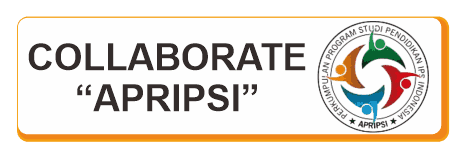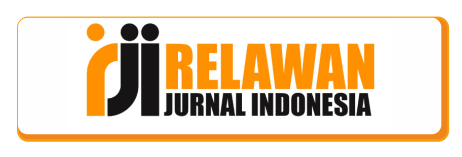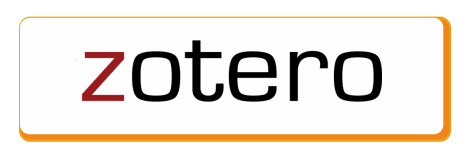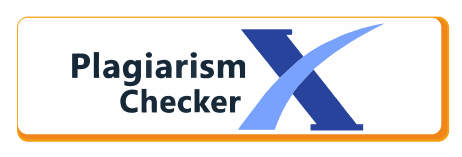Pengembangan Perangkat Pembelajaran IPS SMP/MTs Kelas VIII untuk Melatih Keterampilan Sosial Siswa
 Abstract views: 383
,
Abstract views: 383
,
 PDF downloads: 490
PDF downloads: 490
Abstract
Many students put down Social Studies as boring class, because the learning model is less variable and poor of media. So that the development of learning media in the form of Student Textbooks (Buku Ajar Siswa) is made. The study design using type 4-D (define, design, develop, disseminate) development and research plan one group pretest-posttest design. The collection data method is observation, test, and quetionnaires. in trial of textbook difficulty level in category at very low or very easy to understand and can be regarded as reliable instrument to measure feasibility RPP quality. Average score in each social skill including contributing ideas/opinions, being good listener, and respecting friend’s opinion was 89,69; 90,44; 90,03, which is on very high category. The student response toward components, newness, ease of understand, and practicing social skill of the device obtained percentage in a row was 72,92%, 79,69%, 79,69%, 65,63%, which shows the response of the student is very high. The study concludes that the learning device has high efecctiveness and quality to improve the study result and student’s social skill. Based on this research, so that it can be used by social studies teachers in order to develop devices according to the nature of the material being taught to suit the learning objectives.
Downloads
References
Al Azizani, S. (2021). Peningkatkan Keterampilan Berpikir Kritis Siswa melalui Pembelajaran IPS Tipe Group Investigationpada Siswa Kelas VIII SMP IC Nurul Hidayahdi Kabupaten Pasuruan. ENTITA: Jurnal Pendidikan Ilmu Pengetahuan Sosial Dan Ilmu-Ilmu Sosial, 3(1), 49–64. https://doi.org/10.19105/ejpis.v3i1
Arends, R. I. (2008). Learning to Teach (Belajar Untuk Mengajar) Buku dua edisi ketujuh. Pustaka Pelajar.
Hergenhahn, & Olson. (2008). Theories of learning (teori belajar). Kencana Prenada Media Group.
Irmita, L. U., & Atun, S. (84-90). Pengembangan Perangkat Pembelajaran Menggunakan Pendekatan TPACK Untuk Meningkatkan Literasi Sains. Jurnal Tadris Kimiya, 2, 1 (Juni 2017). http://dx.doi.org/10.15575/jta.v2i1.1363
Muchith, S. (2008). Pembelajaran Kontekstual. Rasail.
Muchtar, S. (2001). Epistimologi Pendidikan IPS. Gelar Pustaka Mandiri.
Mulyatiningsih, E. (2012). Metode Penelitian Terapan Bidang Pendidikan. Alfabeta.
Purwanto, A., Kasdi, A., & Sukartiningsih. (2019). Pengembangan Perangkat Pembelajaran IPS Berorientasi Model Problem Based Learning Berbantuan Media Video Untuk Meningkatkan Hasil Belajar Siswa Kelas IV SD. Jurnal Review Pendidikan Dasar: Jurnal Kajian Pendidikan Dan Hasil Penelitian, Vol 5, No 1, Januari 2019.
Sapriya. (2009). Pendidikan IPS. PT Remaja Rosdakarya.
Setyosari, P. (2016). Metode Penelitian Pendidikan dan Pengembangan (Kelima). Prenadamedia Group.
Soemantri, N. (2001). Menggagas pembaharuan pendidikan IPS. Rosdakarya.
Sukmadinata, N. S. (2012). Metode Penelitian Pendidikan. Remaja Rosdakarya.
Suprijono, A. (2009). Cooperative Learning Teori dan Aplikasi. Pustaka Pelajar.
Copyright (c) 2022 ENTITA: Jurnal Pendidikan Ilmu Pengetahuan Sosial dan Ilmu-Ilmu Sosial

This work is licensed under a Creative Commons Attribution-NonCommercial 4.0 International License.
ENTITA: Jurnal Pendidikan Ilmu Pengetahuan Sosial dan Ilmu-Ilmu Sosial operates an Open Access policy under a Creative Commons Non-Commercial 4.0 International license. Authors who publish with this journal agree to the following terms:
- The copyright of the received article once accepted for publication shall be assigned to the journal as the publisher with licensed under a

- Journal is able to enter into separate, additional contractual arrangements for the non-exclusive distribution of the journal's published version of the work (e.g., post it to an institutional repository or publish it in a book), with an acknowledgement of its initial publication in this journal.
- Journal is permitted and encouraged to post their work online (e.g., in institutional repositories or on their website) prior to and during the submission process, as it can lead to productive exchanges, as well as earlier and greater citation of published work (see The Effect of Open Access).
- Here is Copyright Transfer Form that author can download and send to OJS during submission.

















